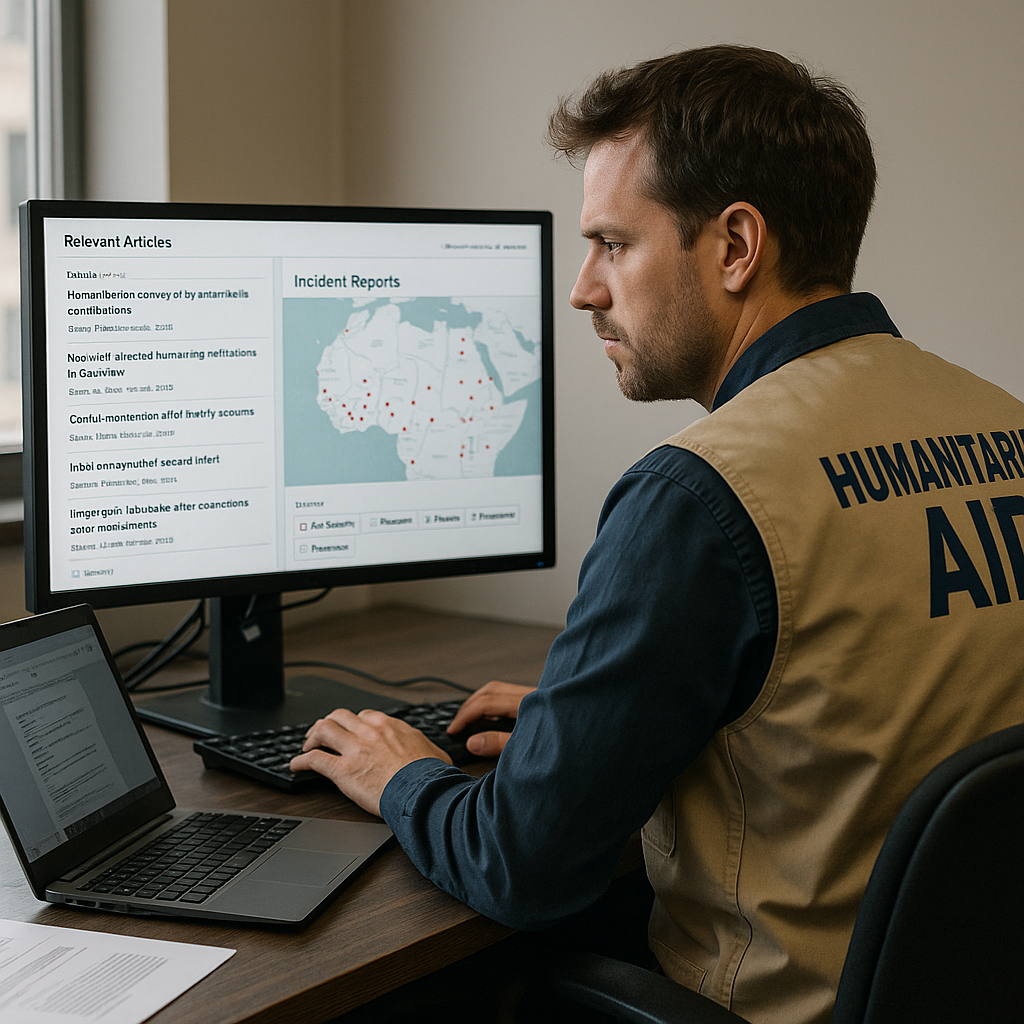AI model breaks new ground in humanitarian field operations
The study offers five actionable insights for humanitarian organizations seeking to adopt AI tools. First, deep problem immersion is critical: understanding organizational workflows, human constraints, and the tolerance for error shapes the deployment strategy from the ground up. Second, data quality must be actively managed over time, not just at the training stage.

A newly deployed artificial intelligence (AI) system is reshaping how humanitarian organizations track violent events across the globe. Engineers and researchers from Dataminr teamed up with the humanitarian intelligence NGO Insecurity Insight to embed multilingual NLP models directly into its field operations, accelerating incident detection and expanding coverage.
Published as a preprint on arXiv, the study titled “Operationalizing AI for Good: Spotlight on Deployment and Integration of AI Models in Humanitarian Work” outlines the deployment lifecycle, from data collection to post-launch monitoring, in one of the few documented examples of a real-world AI-for-Good implementation inside a live NGO workflow.
Model deployment overcomes infrastructure constraints
The system was built for a low-resource environment with tight infrastructure limits. Insecurity Insight operates with minimal technical overhead—a single virtual private server, limited RAM, and basic job scheduling tools. The AI models had to function without GPUs, rely on small transformer architectures, and operate under high latency tolerance.
The team first restructured the data sourcing pipeline by integrating GDELT, a multilingual news database. Seven humanitarian experts were then tasked with annotating articles in English, French, and Arabic across five categories: aid security, education, health, protection, and the newly introduced food security domain.
Model selection prioritized computational efficiency. The team evaluated multilingual transformer models and ultimately chose XLM-RoBERTa, citing its high performance with limited compute. The system uses two models: a relevance classifier to filter news and a category classifier to tag incidents. These were trained using translation-augmented data and optimized using label-masking techniques.
To validate before launch, the researchers created a staging environment to fine-tune model thresholds and simulate real-world content drift. The thresholds were adjusted to maximize precision and limit human review volume. For English-language content, the system reduced the estimated weekly article review load from 951 to 367 items without sacrificing accuracy.
Field deployment yields sharp uptick in incident discovery
After four months in production, the AI-enhanced workflow generated a 3.6-fold increase in confirmed relevant articles—rising from 43 to 154 per week. Manual review workload increased by 3.2 times, showing that the model scaled detection more efficiently than it scaled human labor. The deployed system also expanded the linguistic reach of the NGO’s monitoring capabilities: 42% of confirmed articles were in French or Arabic—languages that were previously not processed at all.
The number of crawled articles surged 23 times. Of those, articles flagged as relevant increased ninefold. The system performed reliably under real-world conditions: live precision for English content reached 0.92, a strong improvement over the previous baseline of 0.80. French and Arabic results also exceeded 0.80 in precision, despite being new additions to the pipeline.
However, the newly added food security category underperformed. The model’s F1 score for English articles dropped from 0.679 in offline tests to just 0.014 in production. A post-deployment audit traced this to inconsistent annotation guidelines and low category representation in the training data. No relevant French or Arabic articles in the food security category were detected at all. The failure underscored the need for tighter labeling processes and active quality control in live systems.
Toward the end of the test period, the system began showing signs of performance degradation due to shifts in news content. To counter this, the research team developed a retraining pipeline and monitoring dashboard to enable Insecurity Insight to maintain model accuracy autonomously.
Lessons offer blueprint for future AI-for-good deployments
The study offers five actionable insights for humanitarian organizations seeking to adopt AI tools. First, deep problem immersion is critical: understanding organizational workflows, human constraints, and the tolerance for error shapes the deployment strategy from the ground up. Second, data quality must be actively managed over time, not just at the training stage.
Third, sustainable deployment requires capacity building. By transferring retraining workflows and model control to the NGO, the team ensured long-term utility without ongoing developer intervention. Fourth, staging environments are essential to tune models for real-world behavior, particularly when shifting from English-centric models to multilingual or regional use cases.
Lastly, continuous performance monitoring must be built in from the start. The system’s late-stage dip in accuracy illustrated how live data can shift rapidly. Without retraining mechanisms in place, even the best-performing models can decay under field conditions.
The authors call on peers to publish similar field reports, arguing that transparent discussion of failures, drift, and capacity challenges is essential for scaling ethical AI. Their detailed metrics, candid about shortcomings, offer a practical counterweight to idealised lab benchmarks and provide a grounded reference for NGOs contemplating their first machine‑learning project.
- FIRST PUBLISHED IN:
- Devdiscourse










